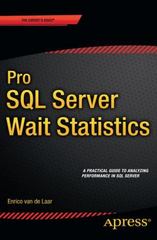2.10 only c and d
2.11 only c and e
2.12 only b and d
2.13 only b and d
2.15 only b
2.16 only b
2.18 all
2.21
2.22 only c
2.23 only c
please show work. will upvote
2.10 Illustrate the following equations using circuits of switches: (a) XY+XY=X (b) (X+Y)Y=XY (c) X+XZY=X+YZ (d) (A+B)C+(A+B)C=A+B (e) (X+Y)(X+Z)=X+YZ (f) X(X+Y)=X 2.11 Simplify each of the following expressions by applying one of the theorems. State the theorem used. (a) (A+B+C)(A+B+C) (b) AB(C+D)+B(C+D) (c) AB+(C+D)(AB) (d) (ABF+CD)(ABF+CEG) (e) [AB+(C+D)+EF](C+D) (f) A(B+C)(DE+F)+(DE+F) 2.12 Simplify each of the following expressions by applying one of the theorems. State the theorem used. (a) (X+YZ)+(X+YZ) (b) [W+X(Y+Z)][W+X(Y+Z)] (c) (VW+UX)(UX+Y+Z+VW) (d) (UV+WX)(UV+WX+YZ) (e) (W+X)(Y+Z)+(W+X)(Y+Z) (f) (V+U+W)[(W+X)+Y+UZ]+[(W+X)+UZ+Y] 2.13 For each of the following circuits, find the output and design a simpler circuit that has the same output. (Hint: Find the circuit output by first finding the output of each gate, going from left to right, and simplifying as you go.) (d) 15 Use only DeMorgan's relationships and Involution to find the complements of the following functions: (a) f(A,B,C,D)=[A+(BCD)][(AD)+B(C+A)] (b) f(A,B,C,D)=ABC+(A+B+D)(ABD+B) 16 Using just the definition of the dual of a Boolean algebra expression, find the duals of the following expressions: (a) f(A,B,C,D)=[A+(BCD)][(AD)+B(C+A)] (b) f(A,B,C,D)=ABC+(A+B+D)(ABD+B) 2.18 For each of the following Boolean (or switching) algebra expressions, indicate which, if any, of the following terms describe the expression: product term, sum-of-products, sum term, and product-of-sums. (More than one may apply.) (a) XY (b) XY+YZ (c) (X+Y)(WX+Z) (d) X+Z (e) (X+Y)(W+Z)(X+Y+Z) 2.21 In the following circuit, F=(A+B)C. Give a truth table for G so that H is as specified in its truth table. If G can be either 0 or 1 for some input combination, leave its value unspecified. 22 Factor each of the following expressions to obtain a product of sums: (a) AB+ACD+ADE (b) HI+JK (c) ABC+ABC+CD (d) AB+(CD+E) (e) ABC+BCD+EF (f) WXY+WX+WY 2.23 Factor each of the following expressions to obtain a product of sums: (a) W+UYV (b) TW+UY+V (c) ABC+BCD+BE (d) ABC+ADE+ABF 2.10 Illustrate the following equations using circuits of switches: (a) XY+XY=X (b) (X+Y)Y=XY (c) X+XZY=X+YZ (d) (A+B)C+(A+B)C=A+B (e) (X+Y)(X+Z)=X+YZ (f) X(X+Y)=X 2.11 Simplify each of the following expressions by applying one of the theorems. State the theorem used. (a) (A+B+C)(A+B+C) (b) AB(C+D)+B(C+D) (c) AB+(C+D)(AB) (d) (ABF+CD)(ABF+CEG) (e) [AB+(C+D)+EF](C+D) (f) A(B+C)(DE+F)+(DE+F) 2.12 Simplify each of the following expressions by applying one of the theorems. State the theorem used. (a) (X+YZ)+(X+YZ) (b) [W+X(Y+Z)][W+X(Y+Z)] (c) (VW+UX)(UX+Y+Z+VW) (d) (UV+WX)(UV+WX+YZ) (e) (W+X)(Y+Z)+(W+X)(Y+Z) (f) (V+U+W)[(W+X)+Y+UZ]+[(W+X)+UZ+Y] 2.13 For each of the following circuits, find the output and design a simpler circuit that has the same output. (Hint: Find the circuit output by first finding the output of each gate, going from left to right, and simplifying as you go.) (d) 15 Use only DeMorgan's relationships and Involution to find the complements of the following functions: (a) f(A,B,C,D)=[A+(BCD)][(AD)+B(C+A)] (b) f(A,B,C,D)=ABC+(A+B+D)(ABD+B) 16 Using just the definition of the dual of a Boolean algebra expression, find the duals of the following expressions: (a) f(A,B,C,D)=[A+(BCD)][(AD)+B(C+A)] (b) f(A,B,C,D)=ABC+(A+B+D)(ABD+B) 2.18 For each of the following Boolean (or switching) algebra expressions, indicate which, if any, of the following terms describe the expression: product term, sum-of-products, sum term, and product-of-sums. (More than one may apply.) (a) XY (b) XY+YZ (c) (X+Y)(WX+Z) (d) X+Z (e) (X+Y)(W+Z)(X+Y+Z) 2.21 In the following circuit, F=(A+B)C. Give a truth table for G so that H is as specified in its truth table. If G can be either 0 or 1 for some input combination, leave its value unspecified. 22 Factor each of the following expressions to obtain a product of sums: (a) AB+ACD+ADE (b) HI+JK (c) ABC+ABC+CD (d) AB+(CD+E) (e) ABC+BCD+EF (f) WXY+WX+WY 2.23 Factor each of the following expressions to obtain a product of sums: (a) W+UYV (b) TW+UY+V (c) ABC+BCD+BE (d) ABC+ADE+ABF

















